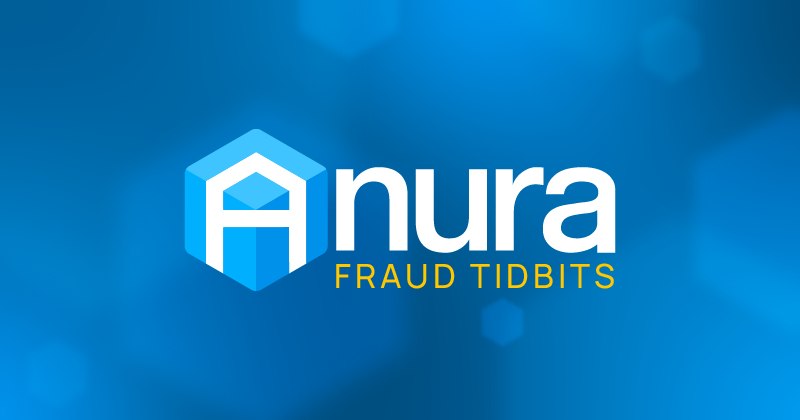TL;DR
- Traffic bots are automated programs that mimic real human visitors online.
- They inflate website metrics like page views and clicks—often for deceptive or fraudulent gain.
- While some bots are benign (used for indexing or testing), malicious traffic bots can drain ad budgets and skew data.
- Common sources include bot farms, malware-infected devices, and spoofed browsers.
- Anura detects and blocks these bots in real-time with 99.999% accuracy when identifying visitors as bad.
What is a Traffic Bot? Why Does It Matter?
A traffic bot is essentially a piece of software or code that imitates real users to generate fake traffic. While some bots serve legitimate purposes, like web crawlers indexing pages or automated systems testing site functionality, malicious traffic bots exist purely to deceive. They can come from bot farms, malware-infected devices, or spoofed browsers, and their main goal is to distort advertising data, drain ad spend, and manipulate analytics.
This artificial activity makes it difficult for marketers to measure real campaign performance. For example, if traffic bots flood your site, your engagement metrics may look impressive, but conversions will remain flat. That disconnect is a classic sign of traffic bot interference, and it’s why strong detection and prevention strategies are crucial for maintaining data integrity.
How Do Traffic Bots Work?
Fake traffic bots can enter your ecosystem in several ways:
- Bot farms generating mass fake visits to boost vanity metrics or ad revenue.
- Click bots that simulate engagement to defraud PPC campaigns.
- Malware bots that hijack real user devices to mask activity.
- Browser spoofing that disguises bot traffic as coming from real devices or sessions.
They’re often programmed to mimic human behavior patterns—scrolling, clicking, and even mouse movements—to avoid basic detection. This makes catching them with traditional rulesets incredibly difficult.
Why are Traffic Bots a Threat?
Even if you’re not buying fake traffic directly, you’re still at risk. Many traffic sources—even reputable ones—can unknowingly introduce bot traffic into your campaigns. That means:
- Wasted ad spend on fake impressions or invalid clicks.
- Skewed attribution models leading to poor business decisions.
- Diluted lead quality and bloated acquisition metrics.
- Increased compliance risks, especially under TCPA or GDPR.
One recent report by the ANA estimated global losses from ad fraud (including bot-driven fraud) at $140 billion annually, and that number keeps climbing.
Can Traffic Bots Be Stopped?
Yes, but not with outdated fraud filters or IP blocklists. Many solutions rely on simple thresholds or outdated databases that allow sophisticated bots to slip through. Anura’s solution is built differently.
With real-time analysis of each visitor's environment, Anura detects bot traffic at the source—without ever flagging legitimate visitors. That’s how we deliver 99.999% accuracy when identifying visitors as bad. No guesswork. No false positives. Just actionable truth.
How Does Anura Help With Traffic Bots?
Anura goes beyond basic bot detection. We:
- Analyze every visit in real time—across all traffic sources.
- Use advanced fingerprinting to identify even the most evasive bots.
- Provide in-depth dashboards for immediate insights.
- Offer fraud source tracing to find where bad traffic originates.
- Require no complex setup or rulesets to get started.
Whether you're running a lead gen campaign, eCommerce store, or programmatic ads, Anura ensures your traffic is clean, verifiable, and profitable.
Learn more about our ad fraud detection solution and how we eliminate traffic bots before they can harm your business.
Frequently Asked Questions About Traffic Bots
Are Traffic Bots Illegal?
Traffic bots themselves aren’t inherently illegal—it depends on how they’re used.
- Benign bots like search engine crawlers are legal and essential.
- Malicious bots used to commit ad fraud can violate regulations, breach contracts, and in some cases, lead to legal action.
- Traffic bots that create compliance risks (e.g., under TCPA or GDPR) can result in severe penalties.
What is an Example of a Traffic Bot?
A common example is a click bot designed to fraudulently click on pay-per-click (PPC) ads to waste competitor budgets or inflate publisher revenue. Another example is a bot farm used to simulate fake website visits and artificially boost vanity metrics.
How Do I Know If I Have a Traffic Bot?
Warning signs include:
- Sudden, unexplained traffic spikes from unusual geographic regions.
- High bounce rates combined with very short session durations.
- Repetitive clicks or rapid page switching from the same IP or device.
- Increased ad spend without corresponding conversions.
Do Traffic Bots Impact SEO?
Yes. Although search engines can typically filter bot traffic from indexing, fake traffic can skew website engagement signals and distort your SEO analytics. Bots may also inflate CTRs in paid search, potentially harming your quality scores.
Can Paid Traffic Sources Accidentally Introduce Traffic Bots?
Yes. Even reputable networks can unknowingly pass bot traffic into your campaigns. Real-time monitoring with a platform like Anura is essential to ensure all traffic is verified.
What Should I Do If I Suspect Traffic Bots?
- Conduct a traffic audit focused on source quality, visitor behavior, and engagement patterns.
- Implement real-time fraud detection like Anura to validate each visitor.
- Review relationships with questionable traffic providers.
- Avoid relying solely on outdated fraud filters or IP blocklists.


